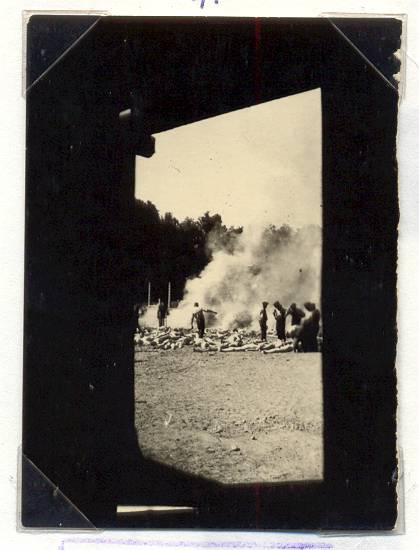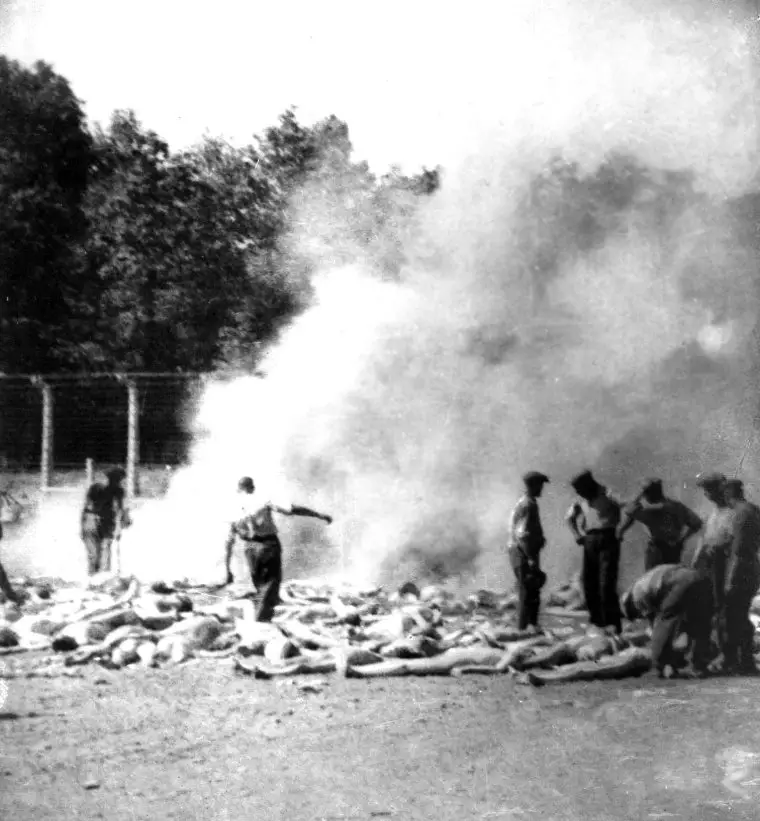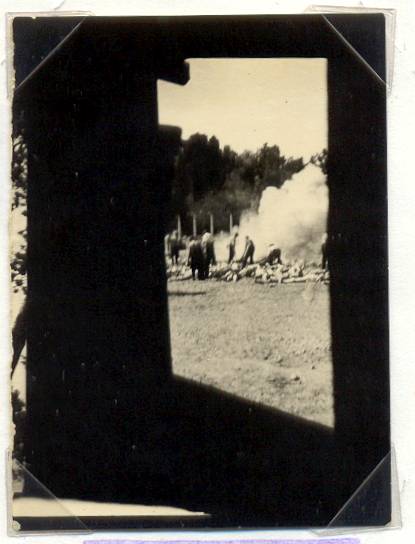Sonderkommando Photographs From Auschwitz
(August 1944)
The Sonderkommando photographs are four blurred photographs taken secretly in August 1944 inside the Auschwitz concentration camp in German-occupied Poland. Along with a few photographs in the Auschwitz Album, they are the only ones known to exist of events around the gas chambers.
The images were taken within 15–30 minutes of each other by an inmate inside Auschwitz-Birkenau usually named only as Alex, a Jewish prisoner from Greece. Several sources identified him as Alberto Errera, a Greek naval officer who was shot and killed after striking an SS officer.. He took two shots from inside one of the gas chambers and two outside, shooting from the hip, unable to aim the camera with any precision.
Click on photos to enlarge
Errera’s code name was Alekos Alexandridis. Other members of the Sonderkommando in the camp’s crematorium V – Alter Fajnzylberg (also known as Stanisław Jankowski), brothers Shlomo and Josel Dragon, and David Szmulewski – helped obtain and hide the camera, and acted as lookouts. Fajnzylberg, who had worked at crematorium V since July 1943, described how the photographs came to be taken:
Fajnzylberg recalled that the camera looked like a German Leica. Szmulewski had hidden it in a bucket, and stayed on the roof of the crematorium as a look-out while Alex shot the film. Fajnzylberg stressed that, although Alex had pressed the shutter, all five men had been present and had acted together. According to Szmulewski, speaking in 1987 to Jean-Claude Pressac, the four photographs were taken within 15–30 minutes of each other.
The film was smuggled out of the camp by the Polish underground, hidden inside a tube of toothpaste by Helena Dantón, who worked in the SS canteen. A note dated September 4, 1944, and signed Stakło, written by political prisoners Józef Cyrankiewicz and Stanisław Kłodziński, was attached to the film. It asked that the photographs be sent to “Tell,” Teresa Łasocka-Estreicher of the underground in Kraków:
When the photographs were first distributed by the Polish resistance, they were cropped to focus on the figures, with the black frames in the two fire-pit images removed. Photography historian Janina Struk said that Łasocka-Estreicher asked Polish photographer Stanisław Mucha to make prints, and it is assumed that it was Mucha who decided to crop them.
The photographs were numbered 280–283 by the Auschwitz-Birkenau State Museum. Nos. 280 and 281 show the cremation of corpses in a fire pit, shot through the black frame of the gas chamber’s doorway or window. No. 282 shows a group of naked women just before they enter the gas chamber. No. 283 is an image of trees, the result of the photographer aiming too high.
Some of the cropped images were published in 1945, attributed to the Sonderkommando member David Szmulewski in a report on Auschwitz-Birkenau by Jan Sehn, a Polish judge. One was exhibited at Auschwitz in 1947, and others were published in 1958 in Warsaw in a book by Stanisław Wrzos-Glinka, Tadeusz Mazur and Jerzy Tomaszewski, published in English as 1939-1945: We Have Not Forgotten.
Struk added that Władyslaw Pytlik of the resistance movement in Brzeszcze offered testimony about his wartime experiences to the Auschwitz-Birkenau State Museum in 1960, and brought along three prints of the cropped photographs. It was only in 1985, after Pytlik died and his wife donated his photographs to the museum, including the uncropped versions, that the museum realized the prints they had seen before had been cropped.
Source: “Sonderkommando photographs,” Wikipedia.









